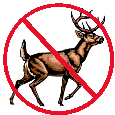United States Department of Agriculture, National Wildlife Research Center: Symposia

National Wildlife Research Center Repellents Conference 1995
Date of this Version
August 1995
Abstract
Food preference is best understood as the interaction between taste and postingestive feedback, determined by an animal's physiological condition and to a food's chemical characteristics. Taste (as well as smell and sight) enables animals to discriminate among foods and provides hedonic sensations associated with eating. Postingestive feedback calibrates taste in accord with a food's homeostatic utility: preference increases when foods are adequate in nutrients; conversely, preference decreases when foods are deficient in nutrients, when they contain excesses of toxins, and when they are too high in rapidly digestible nutrients. Preference also decreases when familiar foods are eaten too frequently or in excess, which causes animals to eat varied diets. Experiences early in life affect preference. Young animals acquire dietary habits as a result of eating particular foods, and they are reluctant to eat novel foods or familiar foods whose flavors have changed. These findings suggest: (1) deterrents based merely on offensive flavors are not likely to be effective in the absence of aversive postingestive effects, (2) many repellents are ineffective because they merely change the flavors of familiar foods (i.e., novelty effects), and (3) management to deter herbivores from eating foods must provide nutritious alternatives.

